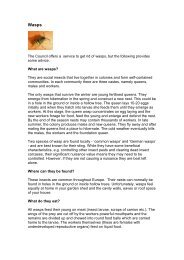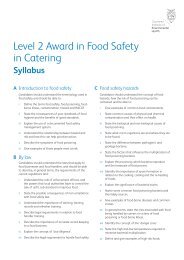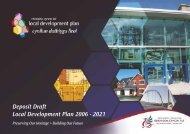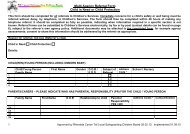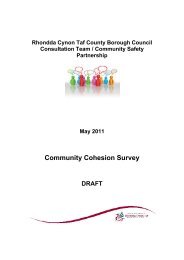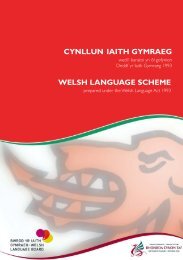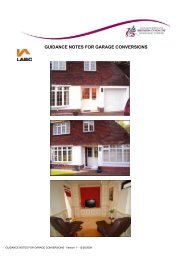LDP nature conservation 2011_Layout 1 - Rhondda Cynon Taf
LDP nature conservation 2011_Layout 1 - Rhondda Cynon Taf
LDP nature conservation 2011_Layout 1 - Rhondda Cynon Taf
- No tags were found...
You also want an ePaper? Increase the reach of your titles
YUMPU automatically turns print PDFs into web optimized ePapers that Google loves.
Nature ConservationPlanning for Biodiversity by David Tyldesley and RTPI (1999)This is a good practice guide that aims to help raise awareness of biodiversity<strong>conservation</strong> in the planning system and to improve understanding, help resolveconflict and create opportunities and provide practical guidance on planninginstruments that may contribute to biodiversity <strong>conservation</strong>.www.rtpi.org.ukBritish Standard InstituteThe British Standard Institute has published PAS 2010:2006 Planning to halt theloss of biodiversity. This has been developed to help the planning system play itspart in halting the decline of biodiversity.www.bsigroup.com/ShopInstitute of Ecology and Environmental Management (IEEM)THE IEEM is a non-profit professional body that represents and supports ecologistsand environmental managers in the UK and abroad. It provides a variety ofservices to develop competency and standards in ecology and environmentalmanagement.IEEM, 43 Southgate Street, Winchester, Hampshire SO23 9EHTelephone: 01962 868626, Fax: 01962 868625Email: enquiries@ieem.net, www.ieem.netThink Wildlife Think Protected SpeciesProvides guidance on the protected species likely to be associated with particulardevelopment types or sites in the Glamorgan or Gwent areas.Developing Naturally by Mike Oxford et al (2000)This is a good practice guide developed for the Association of Local GovernmentEcologists relating to development and the planning system in the UK.5.4 Appendix 4 - Description of <strong>Rhondda</strong> <strong>Cynon</strong> <strong>Taf</strong><strong>Rhondda</strong> <strong>Cynon</strong> <strong>Taf</strong> is situated in the South Wales Coalfield. The geology, landscape,wildlife, land-use, history and culture of the area are closely interconnected.<strong>Rhondda</strong> <strong>Cynon</strong> <strong>Taf</strong> extends from the uplands of the Brecon Beacons to the edge ofthe Vale of Glamorgan. The central feature is the coalfield plateau, which is cut bythe <strong>Rhondda</strong>, <strong>Cynon</strong> and parts of the <strong>Taf</strong>f and Ely river valleys. The coalfield plateauis higher (600m), more remote and exposed in the north, with dramatic cwms andextensive areas of forestry. Further south, hill farming predominates. The <strong>Cynon</strong>and <strong>Rhondda</strong> valleys are generally steep-sided with narrow and mostly built up valleyfloors, and bracken covered, farmed or wooded slopes. South of Pontypridd, the <strong>Taf</strong>fValley is wider but heavily developed. The southern part of the County Borough hasa softer, more lowland landscape of farms, woods, commons, towns and villages.The geology is dominated by the Upper Carboniferous rocks, in particular the SouthWales Pennant Formation with its Coal Measures. Older Palaeozoic rocks are exposedaround the rim of the Coalfield.Local Development Plan 2006 -2021 • 19





